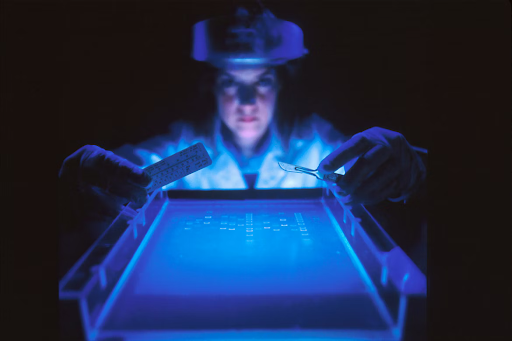
Medical technology is starting to be a reality in the health industry, but it will be the future of global health. If you’re a student of Medicine or you’re already a medical professional, pay attention to the following review. In the texts below, we’ll show you the most disrupting technologies that are helping people to be healed from diseases.
According to Statista, the global medical technology industry’s revenue stood at approximately $384 billion in 2020. This represented a 37 percent increase since 2011, and that market was forecast to increase to around $600 billion by 2024. Therefore, new hardware and software are coming to make healthcare services even more accurate, modern, and effective.
Top Four Emerging Technologies in Healthcare in 2022
Hospitals and healthcare centers adopt devices that positively change diagnoses, treatments, medical attention, and drug administration. Take a look at these forefront technologies that will provide more comfortable medical attention in developing countries.
AI-Enabled Healthcare to Improve Outcomes
Doctors are watching how Artificial Intelligence is helping them to practice surgery interventions accurately. This innovative system avoids bad practices and harmful operations for patients. According to Allied Market Research, Artificial Intelligence in the healthcare industry is expected to reach a total value of $194.4 billion by 2030, at a CAGR of 38.1 percent in this decade.
The use of AI devices and even AI-based robots or machines to execute operations are an incredible innovation that will even increase trust from patients in the complex medical procedures applied in them. These are the benefits of AI in the Medicine field.
- Reduction of clinical errors
- High accuracy of the diagnosis
- Health monitoring of the patients
- Generation of health report documents automatically
- Generation of diagnosis reports automatically
- Lower operational expenditure
- Improved efficiency
Remote Patient Monitoring (RPM)
RPM is the neuralgic point of telemedicine or telehealth. The Remote Patient Monitoring includes healthcare practices relying on devices such as blood pressure cuffs, implantable, and sensors. Therefore, this technology provides accurate indicators and a clear vision of the clinical frame of every patient.
Besides, patients can receive daily updates about their health status with specific and easy-to-understand figures. These devices collect data of the patients through passive means without any invasive element. RPM is utilized with the patients who have been discharged from clinics or hospitals but need to visit again for their routine checkups. Telemedicine is the latest phase of digital advancements for the health stability of people.
Big Data
Big Data means the concentration of the power of data to boost medical procedures. Data is a fundamental tool to get more knowledge about the functioning of the human body. Even so, Big Data is not new to healthcare. So, there’s a lot of ground yet to explore. Healthcare has gained an important evolution due to the volume, variety, and velocity of Electronic Health Records (EHR) data.
These data-driven devices provide wellness trackers, nurse triages, and medical diagnostics. Physicians have found an ally in this combination of software and hardware because of the accuracy of its medical forecasts and analyses on pathologies. Big Data also helps identify the health patterns and provides on-time and reliable solutions to the patients regarding healthcare outcomes, experience, and wellness. Data is the future of Medicine.
Digital Therapeutics
All patients need post-healthcare and post-operation services, which work like special treatments that complement drug administration. Here is where technology comes out and shows the innovation of Digital Therapeutics (DTx). This advancement allows the adaptation of specific treatments to previously determined behaviors of the patient’s medical condition.
Digital Therapeutics (DTx) refers to an evidence-based behavioral treatment delivered to the patients through any software. The digital therapeutics programs monitor medication, diet, blood sugar, blood pressure, and exercise to improve patient care at the highest level ever seen before.
How Will Virtual and Augmented Reality Impact Medicine in the Future?
This is just the beginning of the implementation of immersive technologies in the medical industry during the post-pandemic era. 2021 was the year that drew attention to immersive technologies as a solution to the global public health crisis that burst all around the planet due to COVID-19. Finally, there were venture capital investment and regulatory approvals for VR in the most modern nations.
Moreover, there’s going to be a surge of demand for people to become robotics engineers. If you want to become a robotics engineer now’s the best time because medical technologies will become more ingrained into standard procedures and day-to-day operations in hospitals.
Some of the new changes in medicine we could see as soon as possible are robotic surgeries and cognitive simulations through games, lessons, and activities. All of them are expected to foster VR adoption in 2022 and beyond. Augmented Reality (AR) will allow surgeons to apply complex procedures remotely and even use the software.
Conclusion
Technology and innovation is here to stay in the healthcare industry. The reason is simple. Software, automation, big data, and Artificial Intelligence will help, and they’re already helping doctors provide better medical attention. Like those mentioned above, the quality of every tech innovation represents a higher quality of well-being for humanity.
If you want to incorporate digitization and data into your chiropractic practice then you should try coding bootcamps to help you learn more about technology and programming. There are free coding bootcamps that you can enroll in to learn more about practical advice in using information technology.


